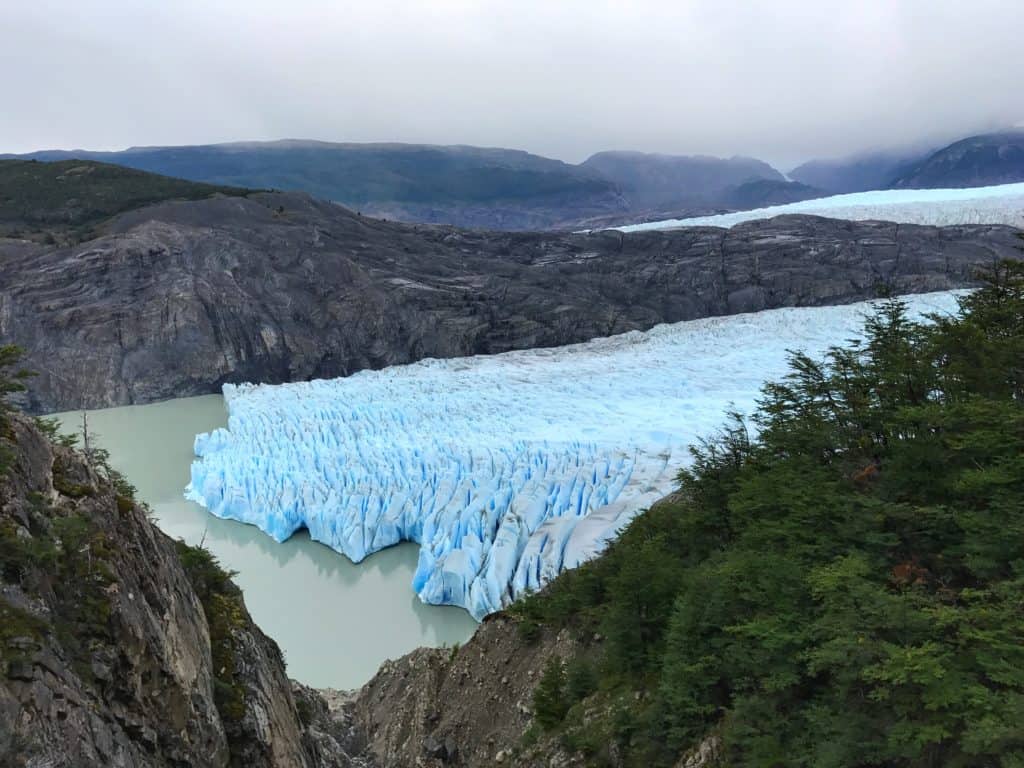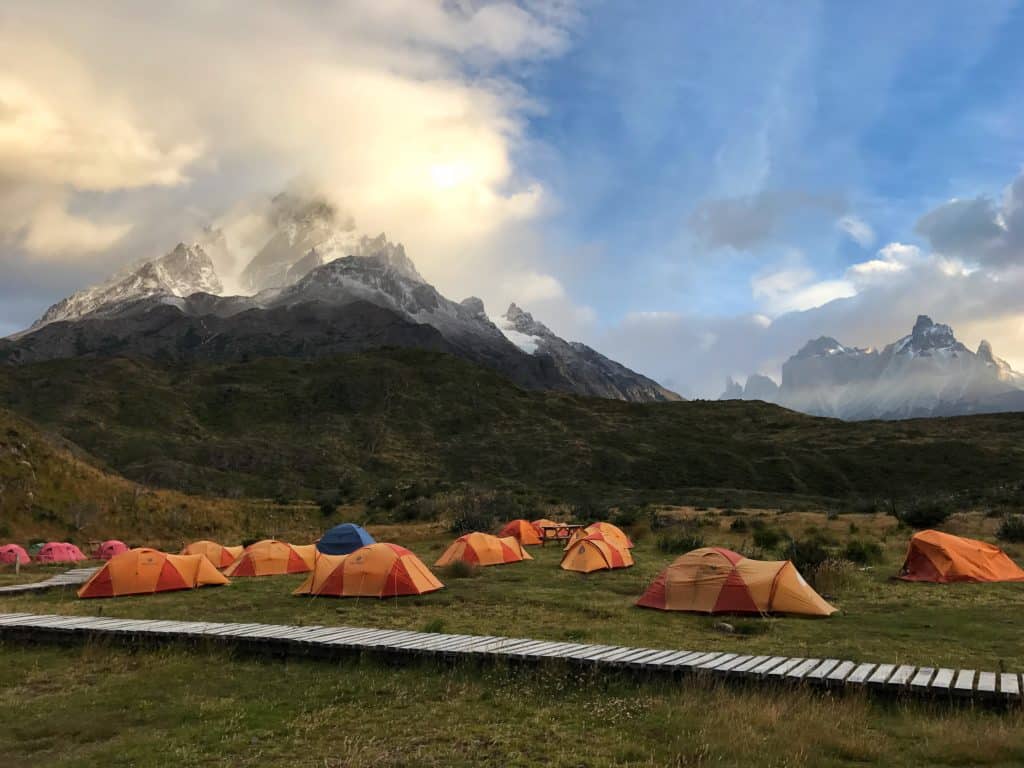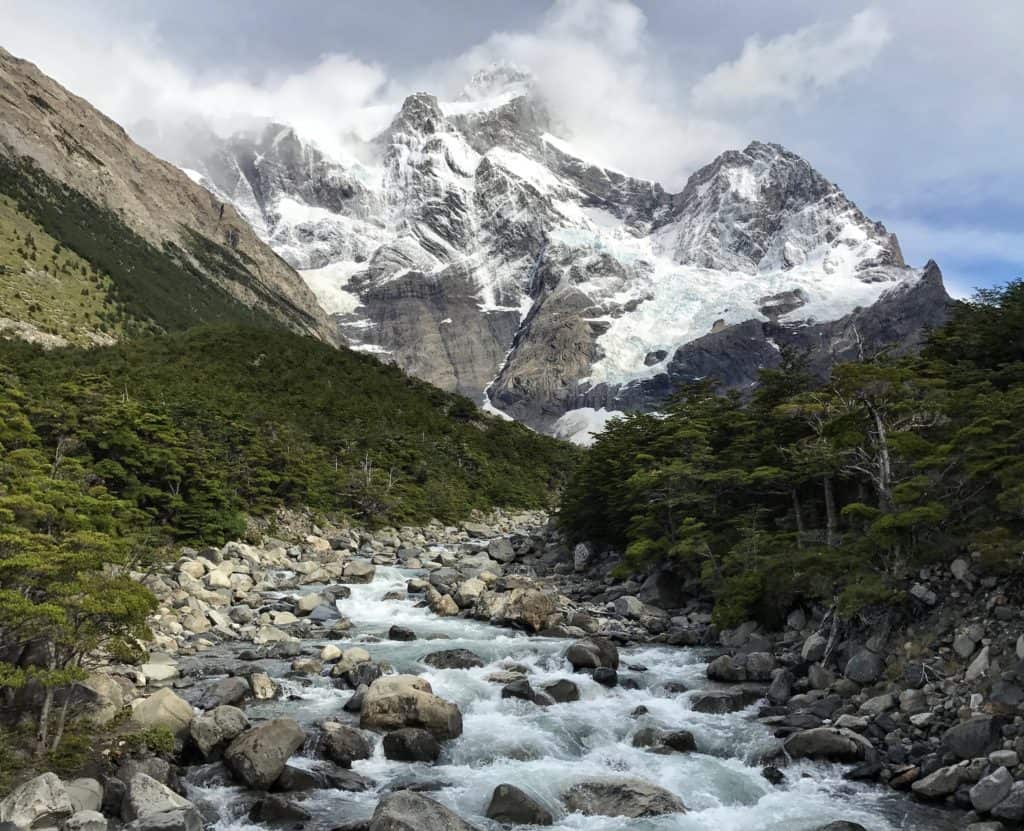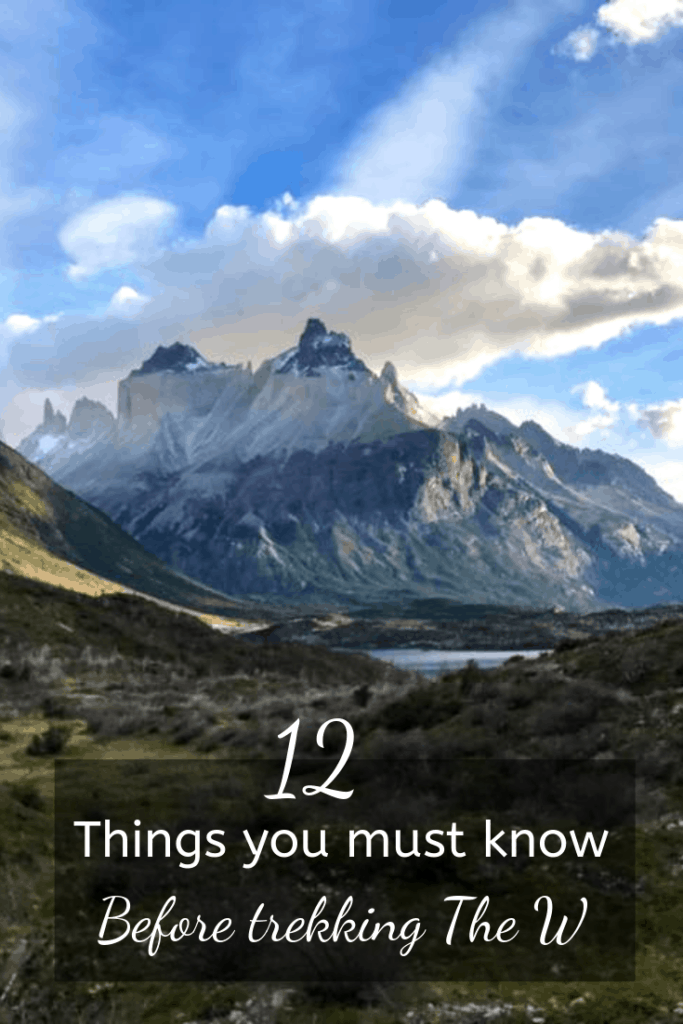What to Know Before Hiking The W
Here is my advice on what to know before hiking The W. The most important thing to know: it’s amazing. Nothing could have kept Patagonia from blowing my mind, but there are things that could have made my time more enjoyable. This is where you come in… learning from my mistakes!
The W Trek is a 55 mile hike through Torres del Paine National Park, Patagonia, Chile. It is beauty beyond our imagination and tests mental and physical strength. The trek is most commonly hiked in 5 days and 4 nights, which means you are hiking 10+ miles per day. I have written an entire guide on how to plan for and do this hike, but here I will focus on what to know before hiking The W.
#1. The weather is outrageous.
Patagonia is known for having multiple seasons in one day. Its weather is classified as a “temperate climate of cold rain without a dry season.” Sound lovely?
Every post you read on how crazy the weather can get is speaking truth. You might hike through hail, snow, rain, wind, and sunshine.
Being prepared for all of this is ideal. Mentally and physically.
An entire day of hiking in the cold rain can be quite the downer, but try not to let it keep you from enjoying your time in this beautiful park.

Glacier Grey 🙂
#2. Bring the right gear.
To try to help with #1, pack the right gear so you won’t be miserable in Patagonia’s weather. Make sure you have a great rain jacket, waterproof gloves, comfortable hiking boots, and the right tent.
The rain jacket should protect you from downpours and windy rain. If Instagram photos are important, pick a cute color because you will be wearing it in almost all of your photos. I also brought a pack-able down jacket to wear underneath my rain jacket.
Be sure to break in your hiking boots prior to the trek, and bring blister supplies just in case. If trekking poles help you, bring those too.
I mentioned the wind, and it is no joke. Your tent must have sturdy poles that will hold up to crazy winds. Many suggest MSR tents. Whatever you choose, it must have strong poles.
I wrote a W Trek Packing List if you need more suggestions on the packing topic.
#3. You MUST book all accommodations and your park pass ahead of time.
You MUST do this before hiking The W. MUST.
My friend and I did this hike in 2017, and Torres del Paine had recently changed their camping policies. They now require reservations for all campsites, including the free ones (the free ones are currently closed, 2023/2024 season).
Many accommodation options fill early, so book your nights as soon as you can.
There are checkpoints throughout the park that require you to prove that you have your campsites/refugios booked. Park staff will turn you away if you do not have somewhere to sleep that night. Do not risk it.
Visit this page to book all your accommodations.
Book your park pass here, and take a screenshot of the QR code to keep on your phone.
It’s also helpful to book your bus into the park ahead of time as well.
#4. It is not all primitive camping.
I imagined pooping in holes in the ground, cooking in the wind/rain, and spending all of my time outside.
This is not the case.
If you love primitive back-country camping, away from all others, this hike might disappoint you (mehh no way. It is too beautiful).
Because of how many visitors the park gets, Torres del Paine tries to limit human damage to the park. They have strict policies on where you can cook, camp, and go to the bathroom.
You can ONLY cook in designated cooking areas. Torres del Paine suffered a fire in 2011, caused by “human negligence,” that destroyed sections of the park. To prevent this from happening again, they provide enclosed areas where you must cook your food. You are surrounded by other campers, and it sometimes felt overwhelming after spending a day mostly alone on the trail. If it prevents even just one more fire, though, it’s worth it.

#5. It is one of the most beautiful places on earth.
While this isn’t required learning prior to your trip, it’s good to know. You will be immersed in some of the most astounding scenery on the planet. Do you want to bring a better camera? Or hike a little more slowly to soak it all in? Or keep a journal as you go? Being in Patagonia is epic; make sure you treat it as such.
#6. You should be prepared for anything to happen.
Even if it means being okay with ending your hike early for the sake of your health and well-being.
Hiking 55 miles is not an easy feat. There is a risk of injury, illness, and mistakes. Be prepared with a travel first aid kit, the right gear (see above), and the ability to hike for long hours each day.
We were hiking out on our last afternoon when we saw a woman fall while hiking downhill. She was not harmed by the fall, but she was very exhausted, had a broken pack, and still had miles to go until her camping spot. We talked with her for a long time about the hiking distance she had left and potential danger of continuing her hike while so tired. She insisted that she would be fine and hiked on in the opposite direction of us. I was worried about her, and it made me question the line between determination and personal safety. Sometimes it is blurred.
We also crossed paths with 2 brothers a few times during our trek. When we finally made it to The Towers, the culmination of the trek, we saw just one of the brothers. His older brother had hurt his knee and felt that he couldn’t continue up to the Towers. He knew his limitations and chose to trust his body.
I developed achilles tendonitis on the 4th day of hiking. At first, I brushed it off as a nagging pain from backpacking so many days in a row. I hiked through the pain, made it to the Towers, and finished the trek. When the pain didn’t dissipate post-hike, I knew it was more than sore. I had pain in my Achilles tendon for over a month after the W Trek. While I’m glad I finished the trek, I’m also grateful that I didn’t tear my Achilles and end up with long-term problems.
Be physically prepared for this trek but also be mentally prepared to turn back or stop if it’s what is best for you.
On that note…

#7. Get travel insurance.
I recommend travel insurance for all travel, but I’d say a trek through the wilderness gives you more of a reason to need. It. Luckily, Nomadic Matt has an excellent guide for you.
You can cross your fingers that everything goes amazingly well. If not, though, you will be protected if you needed to be life-flighted out of the park. Having insurance makes people more likely to get treated when they need to, so I highly recommend it.
#8. There is basically nowhere to charge your phone or camera.
The refugios didn’t have electricity for us campers to use, so we borrowed a battery charger from a friend we met along the way. I recommend bringing a battery charger with you or bringing a spare camera/phone battery. You WILL want to take photos. I promise.
Also, there was no Wifi, which was kind of amazing.

#9. What to know before hiking The W: It can be very expensive.
Trip costs can greatly vary for The W. If you choose to go with a tour and stay in the finer accommodations, you could spend hundreds or thousands of dollars. (I of course don’t vouch for this, but people can make their own choices.)
If you are hiking the W on a budget, costs can still add up. I’d estimate that the cheapest you can hike the W for is $160-ish (this cost is much higher now because the free campsites are closed at this time). This means using all the free campsites (closed for now), bringing your own camping gear, and packing super cheap food. This includes the $85 that you have to spend to bus to and from the park, your park entrance fee, and your one-way ferry.
We messed up and got to Chile without campsite reservations. I had sworn there was no way to book the free campsites but it was because my searches weren’t showing the spanish booking site. Because we learned about this so late, ALL the campsites in the park were booked. While trying not to vomit, we kept refreshing the pages and checking every booking site. Someone must have canceled their trip because by the grace of God, we found 2 bookings at 9pm the night before our hike. Because of this, though, we had to pay almost $100 per person per site. This basically doubled our trip costs.
If you plan ahead the trek won’t cost you a fortune, but it’s not almost free like some backpacking trips are.
#10. The W Trek can get really crowded.
Torres del Paine draws in around 300,000 tourists each year. Many of these visit the same spots you will see during The W Trek. Be prepared to share the trail, wait to take photos, and occasionally be irritated by others.
For me, a main desire to go backpacking is to escape the world. That is harder to do when people are setting up their tents basically on top of yours. (No joke, someone put up their tent so close to ours that they crossed tent lines with us. Please don’t do this.)
This also serves as a reminder to always respect other backpackers and wildlife. Always follow Leave No Trace principles and give others some space when possible.

#11. Consider the O Circuit.
Apparently Torres del Paine is really creative with their trail names. The W trail is shaped like a W, and the O.. well, I think you can figure out that it’s 1 big loop. It is 80ish miles, takes about 8 days, and leads you through quiet and beautiful areas of the park. Because of time constraints, we could only do the W. I would love to go back and do the O Circuit. If you have the time and desire to hike more, it’s worth checking out.
#12. Spend 1 extra day in the park after you finish your hike.
Of all the things to know before hiking The W, this is what I most wish I had known. There are hotels in and near the park. If your budget and time allows, spend a night there. You’ll get to relax before a long bus ride back to Puerto Natales. Even better, you could take a tour the next day to parts of the park that aren’t seen during The W Trek. Soak in the last bit of Torres del Paine.
I hope What To Know Before Hiking The W helps your trip.
You could learn nothing from this list and probably still have an incredible time in Patagonia. It’s just that special of a place. If you’re like me, though, you want to prepare yourself to have the best time possible while hiking the W. If you follow this list and my Guide to Torres del Paine, you can rest assured that you are ready for the hike of a lifetime.

Pin Hiking the W for later!







Comments? Ideas? Advice? Leave some!